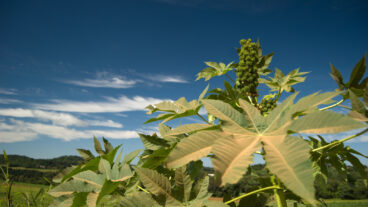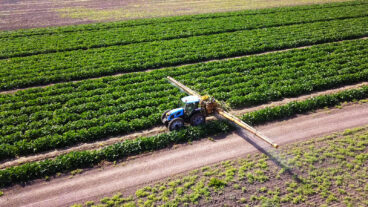The Jacob Blaustein Institute has been testing a solar-powered device that transforms solar energy directly to electricity, without the intermediary of water and steam.
The problem of desertification – the loss of soil fertility due to erosion – barely resonates with most people who live in North America. Terms such as “global warming” and “greenhouse effect” have been in the popular lexicon of environmental activists for almost two decades, but little has been written about desertification in the Western press.
Professor Uriel Safriel of the Ben-Gurion University of the Negev in Israel called the lack of knowledge surprising, given that desertification affects 30 percent of the world and results in about $40 billion in lost income annually. It is also surprising given that desertification already has occurred in the United States – with disastrous results. The “Dust Bowl” that swept through Oklahoma during the 1930s, resulting in widespread loss of life and agriculture, is the most chronicled example.
Safriel, director of the Jacob Blaustein Institute for Desert Research, said during a recent lecture series in the United States that it is imperative to understand the conditions that preceded the Dust Bowl. Safriel said that when a serious grain shortage erupted in Europe during and after World War I, farmers in the Midwest planted extra crops to keep up with the demand, thereby using much more water than was available and removing almost all natural vegetation. The result was parched earth with nothing to keep it moored.
This process, which has contributed to impoverished conditions in much of Sub-Saharan Africa, the Middle East and Asia, has the potential to occur in areas ranging from central California to Latin America if not properly rectified, Safriel said.
Over the course of the past two decades, the Blaustein Institute has studied desertification and produced research yielding surprising results. Foremost among them is the radical notion that the desert may actually be an ideal location for economic prosperity.
In order to create the new paradigm that has Safriel and other researchers at Ben-Gurion University so excited, however, there has to be a shift in the school of thought surrounding desert research.
“For many years all the research went exclusively into technology,” Safriel said. “And while that produced many innovations, it failed to take into consideration the varying political and cultural climates of different countries.
Safriel gave the example of a highly efficient oven powered by solar energy that was ideally suited to a particular Sub-Saharan African country. The people living in the region, however, cooked mainly at night – rendering the sun-dependent oven useless. By researching sociological and political climates, in addition to a region’s geographical concerns, Safriel and his colleagues hope to avoid such situations.
Safriel knows, for example, that generations of people accustomed to herding goats or sheep will be hard-pressed to give up their only known means of income, unless they can adopt an “entrepreneurial mind-set.”
“In Israel, many people move to more arid areas not because of patriotism or seclusion, but because the land is cheap, and it can make them a lot of money,” he said.
Perhaps the most monumental change in the financial fortunes of desert inhabitants might be in the area of solar energy. Although the concept of solar energy has existed for more than three decades, the Blaustein Institute, in collaboration with an Australian university, has upped the ante. The Blaustein Institute has been testing a solar-powered device called the “Big Dish” that transforms solar energy directly to electricity, without the intermediary of water and steam. Not only does that constitute a technological breakthrough, but such a solar panel would work wonders in the desert, where the high costs of implementing the device would be ameliorated by the fierce strength of the desert heat.
Safriel noted that in more affluent urban areas, a 2 kilometer panel could cost approximately $400 per square foot to provide electricity for a major city. In the desert, the scenario is reversed. The sun’s intense heat makes the added yardage of a solar panel unnecessary. Thus, in an age when fossil fuels are rapidly being depleted, the purveyors of natural energy may very well be the same people who find themselves on the lower rungs of the socio-economic ladder.
Furthermore, a natural byproduct of this paradigm may be another concept unknown to many people in the desert regions, particularly in the Middle East: peace. As a result of the peace talks held in Madrid in 1991, the Blaustein Institute has been an integral part of the Initiative for Collaboration to Control Land Degradation in the Middle East.
The Blaustein Institute, which represents Israel, works to curtail soil erosion with representatives from four other areas: Jordan, Egypt, Tunisia and the Palestinian Authority. Despite the conflicts of the past year, the group has been meeting regularly to concentrate on turning arid lands into economically viable centers of productivity.
The theory, Safriel noted, is that “business, science and technology can promote peace – and that peace promotes business.”












